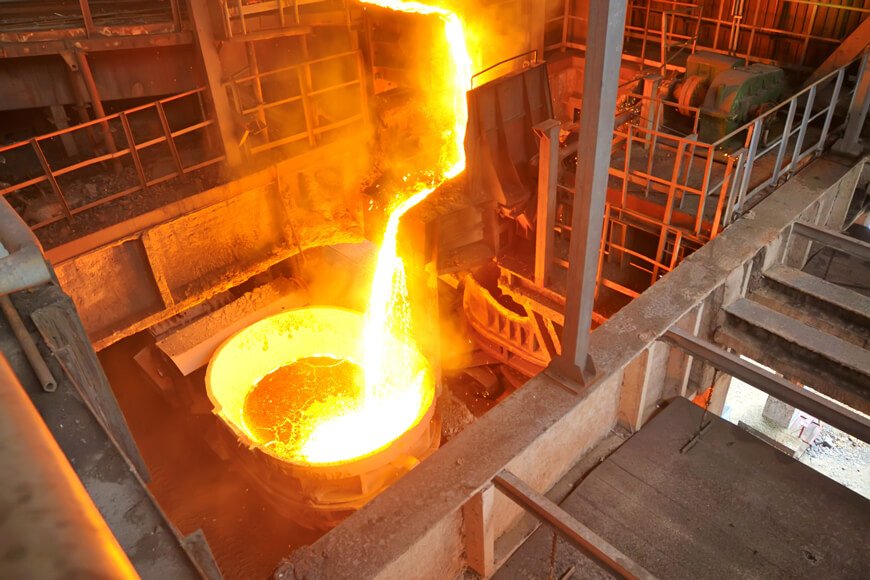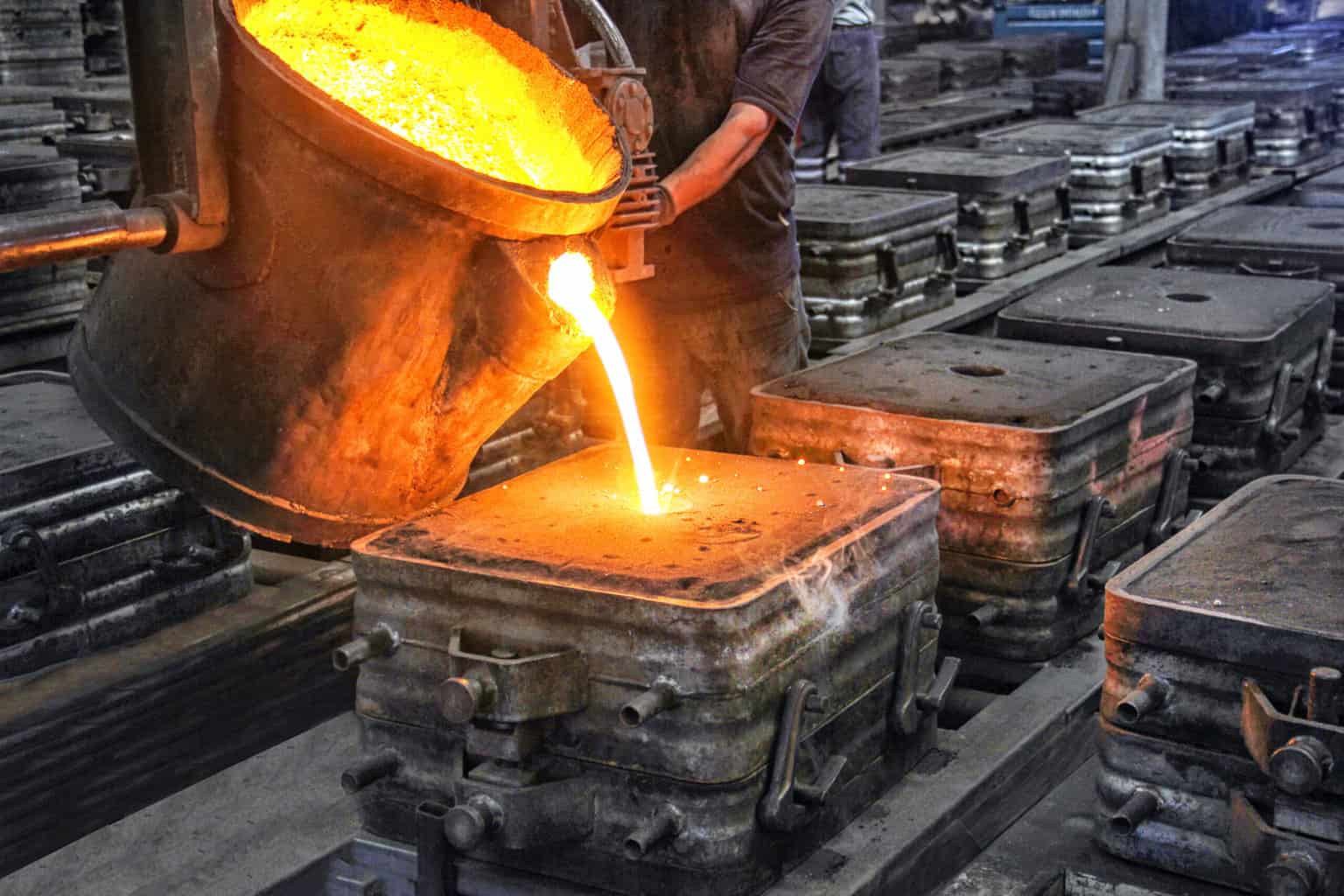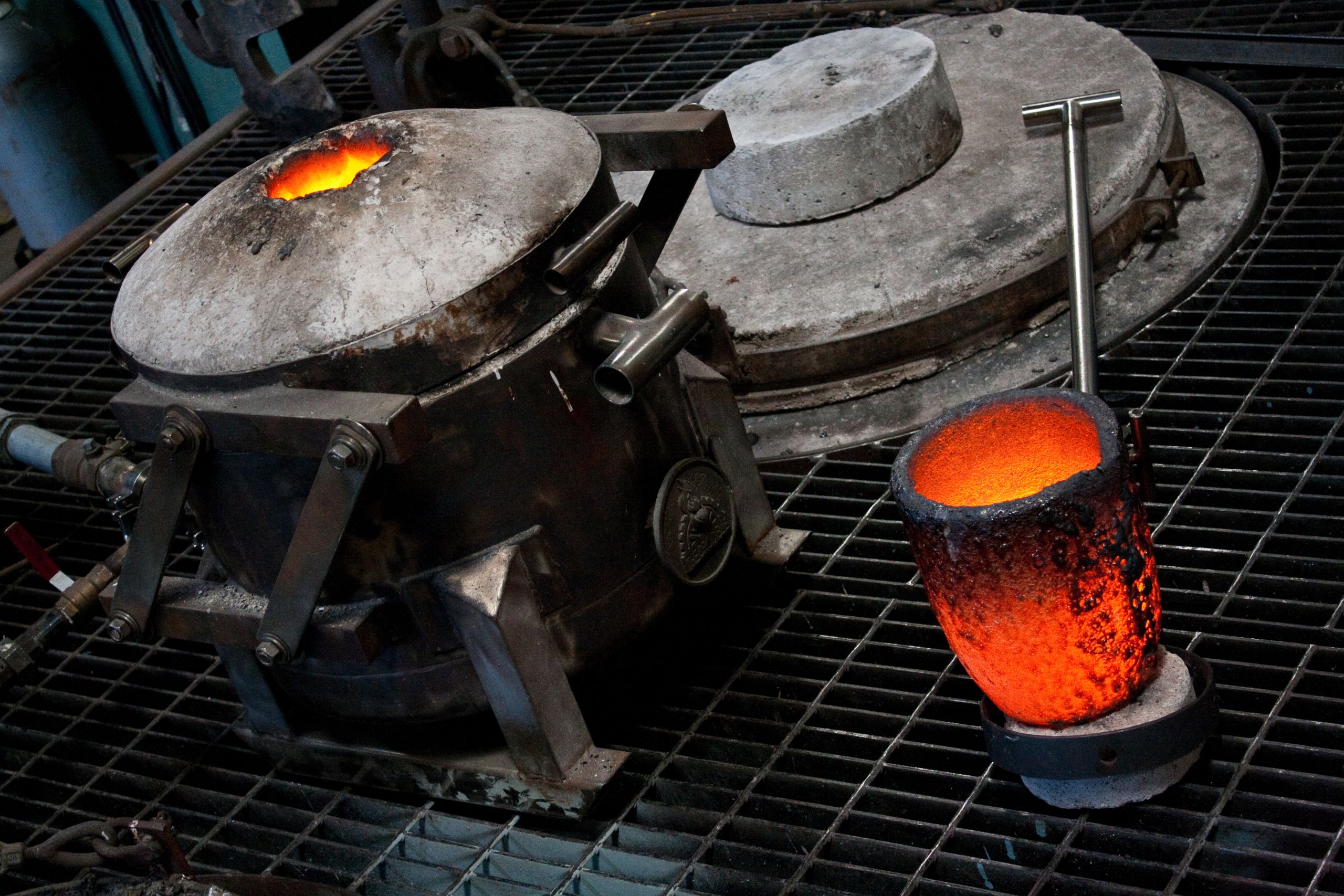How to Cut Material Waste Through Sustainable Casting Foundry Practices
Wiki Article
Recognizing the Procedures and Benefits of a Casting Shop
Casting shops play a crucial function in contemporary manufacturing. They utilize different techniques to transform liquified products right into solid kinds, customized for details applications. Each method, from sand Casting to die spreading, offers unique benefits, affecting industries like automobile and aerospace. Understanding these procedures exposes not just their functional benefits yet also the technologies driving their development. What effects do these advancements hold for future production approaches and sustainability initiatives?Overview of Casting Procedures
Although various casting procedures exist, they all share the basic concept of changing liquid product into solid types. This transformation is accomplished via pouring molten substances into molds, where they cool and solidify right into desired shapes. Various processes satisfy specific products and applications, including metal, plastic, and ceramic casting. Die Casting is commonly used for metals, utilizing high pressure to assure comprehensive styles and smooth coatings. Investment casting, likewise referred to as lost-wax spreading, permits elaborate styles and is appropriate for complex geometries. Other strategies, such as gravity and centrifugal casting, manipulate the force of gravity or rotation to fill up mold and mildews properly. Each process possesses special benefits regarding scalability, material, and accuracy compatibility, leading to varied applications across industries. Understanding these processes is crucial for picking one of the most suitable technique for an offered job, ensuring the finest results in manufacturing and manufacturing.Sand Casting: Applications and strategies

As soon as the mold and mildew is prepared, molten steel is poured right into the tooth cavity, where it cools and solidifies. After cooling, the sand is eliminated, revealing the cast object. Sand Casting is favored for its ability, cost-effectiveness, and adaptability to create both big and little amounts. Furthermore, it accommodates a variety of metals, consisting of iron, aluminum, and bronze. On the whole, sand Casting continues to be a basic strategy in Foundry operations, making it possible for producers to satisfy diverse production needs successfully.
Financial Investment Casting: Accuracy and Detail
Financial investment Casting is a very exact production process that generates comprehensive elements with making use of a wax pattern. This strategy is suitable across numerous sectors, consisting of aerospace, automobile, and clinical, where accuracy and surface coating are essential. Understanding the details of financial investment Casting can illuminate its advantages in creating complicated geometries and high-grade components.
Process Overview
When thinking about the ins and outs of casting procedures, investment Casting stands apart for its capacity to generate intricate shapes with remarkable accuracy and detail. This method involves developing a wax pattern, which is coated in a ceramic covering and consequently heated to eliminate the wax, leaving a hollow mold and mildew. Once the mold and mildew is prepared, molten steel is gathered, filling up the intricate tooth cavities. The cooling process permits the steel to solidify, after which the ceramic covering is broken away, revealing the ended up element. This method is especially advantageous for creating top notch components with limited tolerances and smooth surfaces. Financial investment Casting reduces product waste and allows for the unification of complex geometries that are testing to attain with other casting techniques.Applications and Industries
Although investment Casting is typically related to the aerospace and vehicle markets, its convenience reaches a wide array of applications across different markets. This approach is especially important in making complex components for clinical tools, where precision is essential for capability and safety and security. Furthermore, the power sector take advantage of investment Casting in the manufacturing of parts for turbines and pumps, showcasing its integrity under extreme problems. The electronic devices sector additionally utilizes investment Casting to develop complex housings and adapters that need great information. Furthermore, the protection market utilizes this Casting strategy for creating resilient, light-weight elements. Overall, investment casting's ability to accomplish high degrees of detail and accuracy makes it a vital process in multiple sectors.Die Casting: Speed and Effectiveness
Pass away Casting is identified for its fast production cycle, enabling producers to create parts promptly and successfully. This approach not just assures high precision in the finished products but additionally adds to an affordable manufacturing process. Consequently, pass away Casting stands out as a recommended selection in numerous markets looking for to enhance manufacturing without compromising quality.Fast Production Cycle
As suppliers seek to enhance performance, the rapid manufacturing cycle intrinsic in die Casting becomes a considerable advantage. This process permits for the quick production of components, making it possible for producers to fulfill high demand successfully. The capability to develop large amounts in a short timeframe decreases preparations, enhancing the general manufacturing workflow. Additionally, computerized die Casting equipments run at a high speed, even more accelerating output while preserving regular high quality. This performance not only decreases labor prices but additionally enhances source use, adding to even more lasting manufacturing methods. By utilizing rapid manufacturing cycles, companies can react quickly to market adjustments, making sure competition and cultivating technology in item growth. On the whole, die spreading's speed is an important variable in modern-day production success.High Precision Components
The rapid manufacturing cycle in die Casting not only improves speed however additionally greatly contributes to the production of high accuracy parts. This procedure includes injecting molten metal into a mold under high pressure, permitting elaborate layouts and limited tolerances. Because of this, components generated via die Casting exhibit minimal variation in dimensions, making certain consistency across large sets. This accuracy is particularly useful in markets such as automobile and aerospace, where exact specs are critical. Furthermore, the high-speed nature of die Casting decreases the time required for production while keeping high quality criteria. Suppliers can depend on die casting to provide exact parts efficiently, fulfilling the demands of contemporary engineering without endangering on performance or reliability.Cost-Effective Production Refine
Making best use of manufacturing efficiency, die Casting attracts attention as an affordable manufacturing process that greatly lowers labor and product expenses. This strategy makes use of liquified steel, which is injected into a mold and mildew under high stress, enabling for quick production of complex forms with very little waste. The high-speed nature of die Casting not only accelerates the manufacturing timeline however also ensures consistency throughout huge quantities, making it suitable for mass manufacturing. On top of that, the durability of the molds utilized leads to longer production runs without the requirement for frequent replacements, consequently reducing prices. Subsequently, pass away casting emerges as a favored choice for makers looking for to stabilize quality and price while satisfying high need in numerous sectors.Advantages of Using Casting Foundries
Numerous benefits emerge from using Casting shops in producing procedures. One substantial advantage is the ability to create complex forms and complex styles that might be challenging or difficult to attain via various other approaches. This versatility enables better layout creativity and development. Additionally, casting foundries can accommodate a large selection of products, including different metals and alloys, which expands the possibilities for product applications.An additional advantage is the scalability of manufacturing. Foundries can effectively generate both tiny and huge amounts, making them suitable for varied markets, from automobile to aerospace. The Casting process additionally minimizes material waste, as excess material can typically be reused within the foundry, adding to sustainability efforts.
Casting foundries usually have developed competence and progressed innovation, making certain that they can fulfill particular production demands while optimizing operational performance. These advantages jointly enhance the general effectiveness of manufacturing operations.
High Quality Control in Casting Manufacturing
Effective top quality control in Casting production is vital for ensuring that the end products meet the called for requirements and specs. This procedure entails systematic monitoring and assessment at numerous phases of production, from basic material selection to the final inspection of cast elements. Trick practices consist of product testing, dimensional inspections, and complete examination of surface area finishes.Casting factories frequently execute analytical process control (copyright) methods to preserve and identify variants uniformity in manufacturing - Casting Foundry. By utilizing sophisticated technologies such as electronic dimension devices and computerized examination systems, shops can enhance precision and decrease human mistake
Regular audits and adherence to industry criteria, such as ISO qualifications, better boost the quality control framework. Eventually, strenuous high quality control not just decreases flaws and waste yet additionally improves customer complete satisfaction and trust, placing the Foundry as a dependable vendor in the competitive market.

Advancements Forming the Future of Spreading
As the Casting sector develops, technologies are basically reshaping manufacturing procedures and improving effectiveness. Advanced technologies such as additive manufacturing, or 3D printing, enable the fast creation of complex molds, minimizing preparations and product waste. Automation is also playing an important role; robotics improve recurring jobs, enhancing precision and decreasing labor expenses.Additionally, the assimilation of synthetic intelligence and machine knowing enhances the anticipating abilities of foundries, enabling real-time top quality tracking and process optimization. These innovations promote earlier discovery of prospective problems, minimizing scrap prices.
Sustainability is another crucial consideration driving development, with several foundries embracing energy-efficient methods and green materials. The shift toward round economy concepts urges reusing and recycling materials, decreasing environmental effect.
Jointly, these innovations not only improve operational effectiveness yet additionally place the Casting sector for an extra sustainable and technologically advanced future. Casting Foundry.
Often Asked Concerns
What Materials Are Frequently Utilized in Casting Foundries?
Typical materials utilized in casting factories include metals such as aluminum, iron, and bronze, in addition to numerous alloys. In addition, sand and material are often utilized for molds, boosting the Casting procedure and the top quality of completed products.The length of time Does the Casting Process Usually Take?
The Casting procedure normally takes numerous hours to days, relying on factors such as the intricacy of the mold, the material utilized, and the cooling time required. Each project has special requirements influencing period.What Industries Largely Make Use Of Casting Foundry Providers?
Different industries make use of casting Foundry services, including auto, production, aerospace, and construction. These fields depend on casting for producing complicated metal components, ensuring durability and precision in their items, improving total effectiveness and efficiency.Are There Environmental Problems Connected With Casting Shops?
Environmental worries associated with casting shops include air contamination from emissions, waste administration concerns, and source usage. These elements impact local environments, motivating sector stakeholders to seek sustainable techniques and technologies to mitigate unfavorable results.Just How Do Casting Foundries Guarantee Employee Safety And Security?
Casting foundries execute extensive security methods, consisting of individual safety equipment, regular training, and adherence to market guidelines. Casting Foundry. They perform constant safety and security audits to identify risks, making sure a more secure working setting for their employees and reducing dangers
Report this wiki page